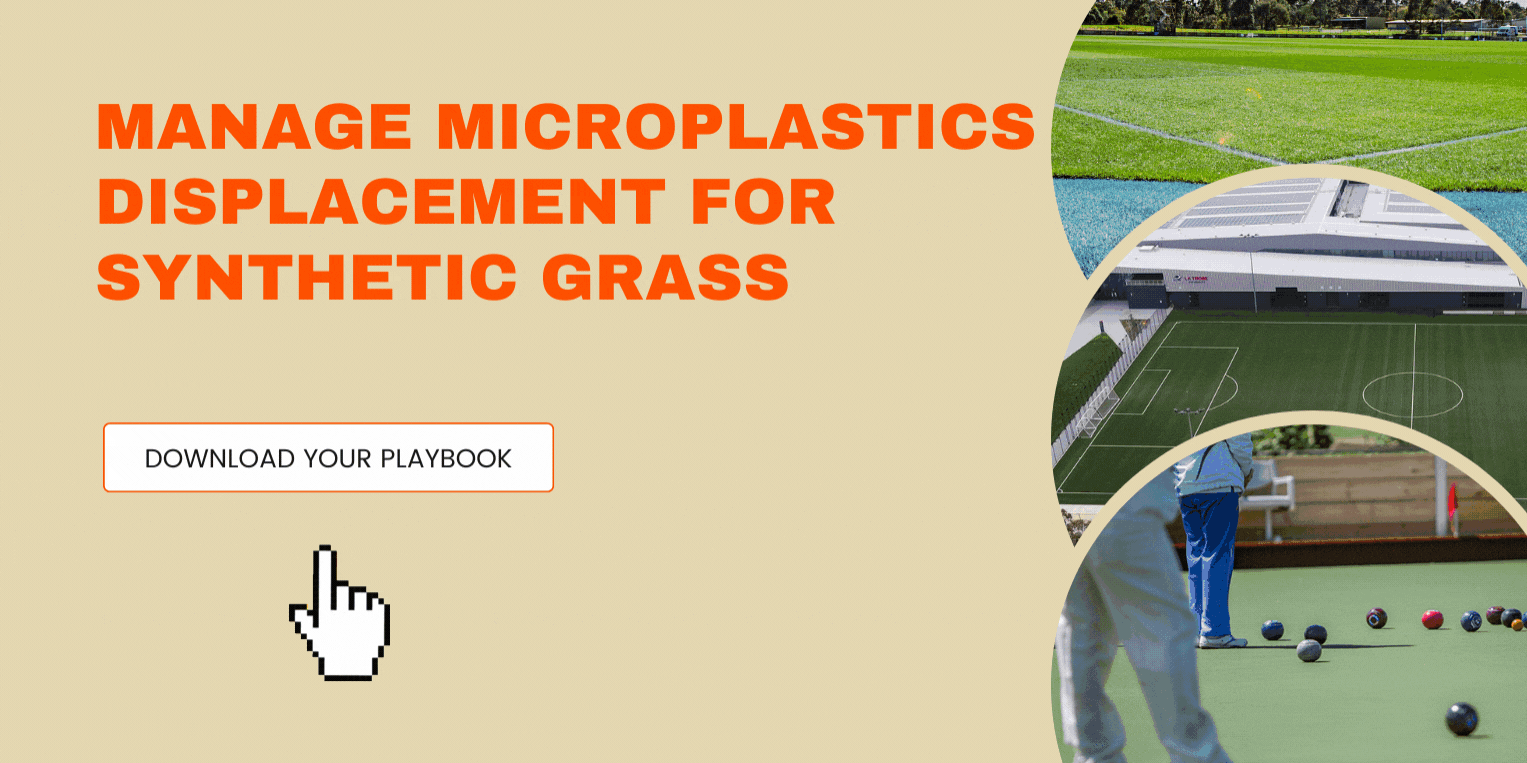Long pile synthetic turf can be used for many sports such as AFL, Rugby (both codes), Soccer, Cricket (outfield), and Touch Fields of Play. The surface provides an alternative to natural turf, providing better durability, resulting in more hours of playability each week.
Although one of the benefits to choosing synthetic turf instead of natural turf is a reduced maintenance regime, the upkeep of a synthetic turf Field of Play is still necessary to ensure the lifespan, performance and playability of the surface is maintained.
In this post, we will cover some best practices to ensure your synthetic turf is always performing at its maximum.
Adhere to operational usage guidelines
To minimise damage and requirement for additional maintenance, the following should be adhered to around the Field of Play:
- No access to heavy machinery or vehicles and all necessary maintenance equipment are to have low pressure balloon tyres and proceed at low speed.
- Correct studs on football boots / footwear are to be worn by players.
- No smoking, flammable products, animals, food, chewing gum or drinks around the surface.
- Remove any debris, such as rubbish or leaf litter as soon as possible.
- Repairs to damage are identified and completed immediately.
Ensure the surface is maintained regularly
A synthetic surface maintenance contractor should be engaged to perform routine maintenance (frequency dependent on level of use). This includes cleaning, sweeping and redistribution of infill.
Every 6 months more thorough maintenance is recommended, such as:
- Checking linemarking joints,
- Conditioning,
- Deep cleaning,
- Topping up the infill.
All maintenance procedures must adhere to the manufacturer’s specification of the synthetic turf product to avoid damage or deterioration.
Perform extra checks to high wear areas
It is common that areas such as goal mouths are prone to high wear, more so than other areas of a field, increasing the possibility of damage or deterioration to the surface. These areas should be inspected regularly and be maintained accordingly.
Undertake independent condition assessment
On-going visual inspections of the Field of Play surface and review of maintenance regime will ensure the maintenance works are being completed not only in accordance with the maintenance specification, but also the frequency of use.
Maintenance regimes are site specific depending on the synthetic system and the frequency of use, and can be adjusted accordingly based on findings of the condition assessment.
Complete compliance testing
For many sports governing bodies, it is expected the Field of Play surface remains compliant throughout the lifespan. This involves a review by an independent testing authority on a periodic basis to check elements such as surface/ball interaction, surface/player interaction, material and build quality.
Synthetic turf as a surface profile is frequently used in many different sports. Its robustness and durability make it a preferred choice for a sport Field of Play surface profile.
However, keeping it at a high-performing state over the years requires diligent and regular maintenance. This means specific rules and guidelines need to be strictly followed.
It’s also strongly recommended to perform checks, testing and other relevant condition assessments to make sure that the chosen surface is still delivering to its highest possibilities.
If you would like to know more about this subject, we've explained what are the difference between synthetic and natural turf.
We're also giving more insights about what is rubber infill and why use it for synthetic sports fields.
We've also put together a Playbooks aiming to help you understand and minimise microplastics displacement for all synthetic turf designs. Click on the banner below to download!
If you would like to discuss this topic more in details, feel free to contact us!
Return to the main blog page.


